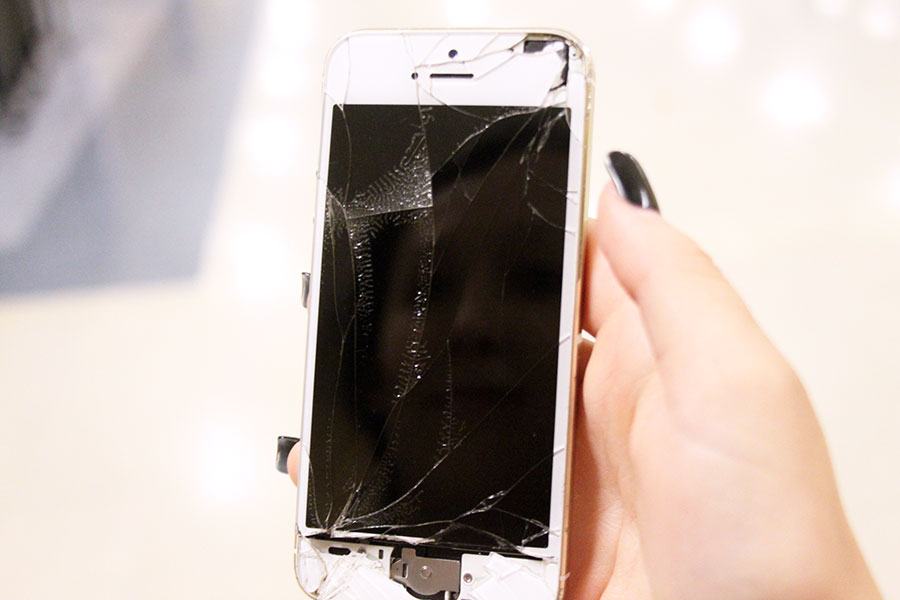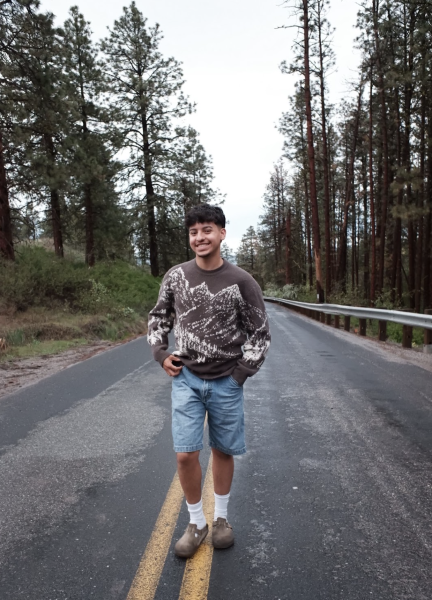Five social media platforms, five ways they affect your self-esteem
Overeat but stay skinny: Ten years ago, movies such as Mean Girls portrayed teenagers jumping to diets and counting carbs all in the name of losing three pounds. Today, the media is infiltrated with chefs sauteing on the Food Network, singles documenting their food dates on Instagram, and Wenatchee High School students tweeting how they would do anything for a Dutch Bros. right now. With food receiving such public affectation, the idea of following a diet may have lost its glamour while overeating is a shared desire.
“More people are interested in food and posting about restaurants, so when others see this, they may want to try that place and eat there,” senior Sydney Johnson said. “People joke around about eating a lot, and they do not starve themselves anymore.”
Among food selfies and binge confessions on Instagram and Twitter feeds, you can find selfies of models and celebrities serving as reminders of the stereotypes of beauty.
“They [the media] always makes it seem girls have to be skinny, blonde, and blue eyes,” senior Elena Noyola said.
To get the “ideal” body type, teenagers may still skip meals. According to U.S. News, the number of eating disorders and hospitalizations have increased over the past decade, especially in boys and minorities. As users control what they post or tweet, it’s easy to conceal the practices no longer publically popular while maintaining today’s cool attitude: “I love food.”
Constantly comparing yourself to others: It’s right there, all the time, and you cannot help it. Scrolling through your Instagram feed, it’s only human nature to take stock of friends, trips, clothes, and looks in the photos of those you follow and compare them to your own.
“I do [compare myself] because some people take better pictures — they don’t really look like themselves — but they still look better than me,” freshman Mackenzie Sutton said.
Of those being compared with, celebrities equipped with makeup artists, stylists, and wealth may be the harshest competitors for the average teen.
“There’s always that one celebrity you admire most that you try to compare to and look like that,” sophomore Laura Castillo said.
For Noyola, that celebrity is Nicki Minaj. “When I follow Nicki Minaj, I want to be like her, if I don’t have that outfit [in the photo], I feel like I’m not pretty enough,” she said.
Regardless if it’s a celebrity’s or a best friend’s selfie that has you measuring up, you may be competing with an incomplete image.
“You always show the positive parts of your life,” freshman Tara McBride said. “The ‘fake, everything is happy side.’ ”
Likes, followers, and favorites: At a time when more relationships are built electronically than face-to-face, life can become measured in likes, followers, and favorites.
“Now it’s all about being famous and who get’s the most likes,” Castillo said. “Even if I don’t get enough likes, I feel comfortable with myself because I chose that photo for a reason.”
But what if you are not the only one who chose it? When two people post about the same event, differences in likes can hit hard.
“If someone posts the same picture of me and gets more likes, than I look like a dufus,” freshman Trevor Eastman said. “If it’s not above 130 likes, delete.”
However, the time of posting and how many followers could see it create a discrepancy in the amounts of likes a photo receives. On the other hand, the amount of followers, or how many people choose to see your photos, is more straightforward.
“I think if I don’t have enough followers, than I’m not important enough, or I don’t have enough cool pictures,” Noyola said.
And when you have stellar numbers, that can boost your self-esteem, Johnson said. This high can be addicting to the point where some users beg for followers in the comments.. But even as they clamor for virtual interaction, the preference for genuine relationships remains.
“I care more about interaction through real life than through a phone,” freshman Noah Sanchez said.
Self-promotion: Pictures of their newest kicks, analyses of their love lives, inside looks of last night’s party… no this isn’t the contents of a tabloid but the Twitter profile of an average joe. Once a practice exclusive to celebrities, social media allows the majority to flaunt their life as if they are famous, sometimes reaching that fame in the process.
One sturdy platform in social media is Youtube, and through comedy, music, and tutorial videos, vloggers rank higher in popularity among U.S. teenagers than mainstream celebrities, according to a survey by Variety.
“Now it’s all about being famous and who get’s the most likes,” Castillo said.
Even if it does not earn them fame, social media allows users to flaunt what they do have.
“People just live around that [documenting their life through social media],” Noyola said. “That is why everyone today is materialistic.”
Noyola admits she takes part in this, especially when it comes to posting selfies.
“Oh yeah, I’m conceited,” Noyola said. “I know beauty is not everything, but in this day in age, you have to be pretty.”
Beyond materialism, Sanchez would simply say people want attention. “When someone posts about what’s actually happening, it’s cool,” he said. But ‘I broke up with my boyfriend’ is just asking for attention.”
And not so much for others: Flip through the library of a phone’s camera, and one is bound to find shots of double chins, awkward photo bombs, and dazed eyes. Why such a motley collection? Teenagers love nothing better than sharing ugly photos of themselves, or better yet, their friends, to the world through Snapchat or Twitter.
“I just see it as humourous,” Castillo said. “We all do it to each other.”
With the act of humiliating one another being mutual, the embarrassment factor of an ugly photo only increases. Yet no matter how uncalled for a photo can be, most teenagers feel helpless when it comes to preventing the sharing of it.
“There’s nothing you can do about it [them having a photo] unless you take their phone away,” sophomore Logan Moore said.
Even so, the idea of your best friend having a goofy photo isn’t scary; it’s the thought of who has seen it that chills.
“You don’t know where they are sending it to, it might be a creepy stalker,” Moore said.





